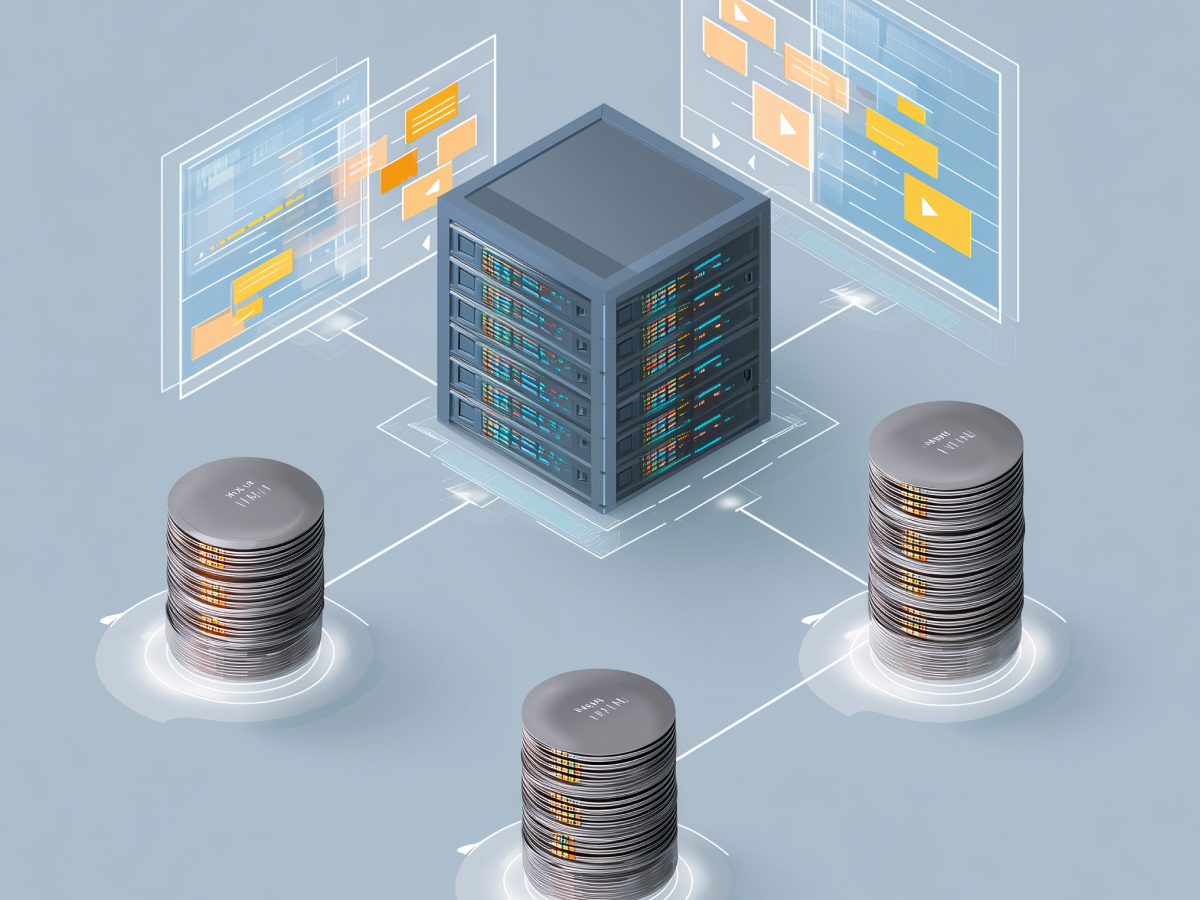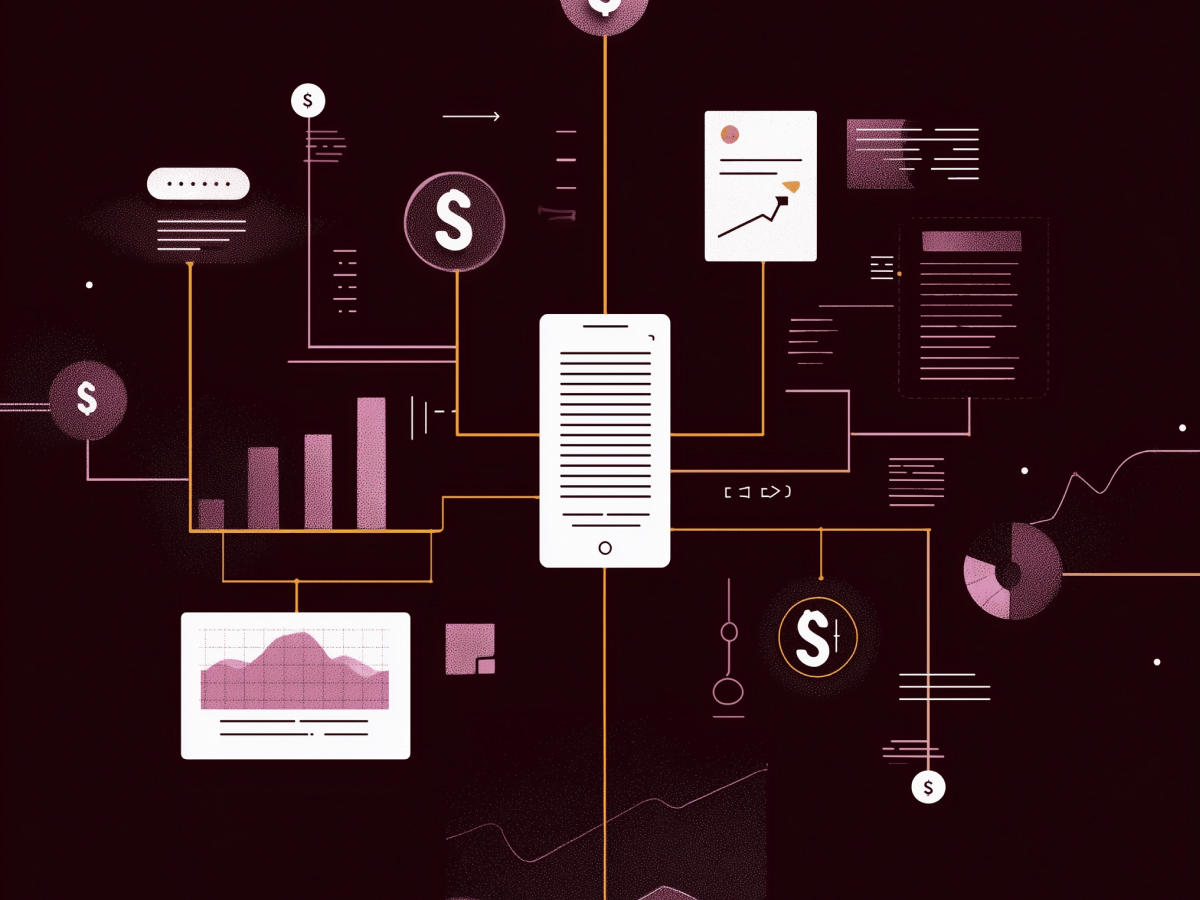Speed, efficiency, and security in one package
In simple terms, DevOps automation integrates the creative minds building your product (developers) with the operational teams running it (IT). This integration lets your teams work seamlessly and focus on innovating rather than firefighting.
Automating repetitive tasks like testing and deployment, your team can move faster and smarter. Instead of wasting time on manual work, they can direct their energy to solving real challenges—creating better features, optimizing performance, and meeting your customers’ needs. At its core, DevOps automation eliminates bottlenecks, enabling you to bring products to market faster than your competitors.
It’s worth noting that organizations using these practices are seeing tangible results. According to the DORA report, companies that adopt DevOps experience deployment lead times that are 25-55% faster. Imagine how much more you could achieve with that kind of acceleration.
Embedded security without slowing down
Security is one of those things people sometimes overlook until it becomes a problem. But here’s the kicker—security doesn’t have to slow you down. DevOps automation makes it possible to bake security directly into your development process, so it becomes second nature, not a roadblock.
Here’s how it works. Automation tools handle tasks like scanning for vulnerabilities, analyzing your code for weaknesses, and ensuring compliance with regulations—all in real-time, during development. Instead of waiting until the end of the process to catch issues, you fix them as they come up.
This approach, often called DevSecOps, makes sure your security scales with your business. When you’re deploying software rapidly, you can’t afford to take shortcuts. Automation makes sure you don’t have to. The beauty is in the consistency, as automation eliminates human error, so you stay protected even as you push updates frequently.
Cut costs without compromising quality
Let’s talk about money—because at the end of the day, efficiency is about doing things cheaper without sacrificing quality. DevOps automation is the lean machine that makes this possible. Manual workflows are slow, inconsistent, and prone to mistakes. Automation takes those inefficiencies out of the equation.
Here’s an example: automated testing identifies bugs earlier in the development cycle when they’re cheaper to fix. Compare that to finding a problem after your software is already live—by then, the damage is done, and fixing it becomes far more expensive. With automation, your team spends less time fixing and more time creating.
Beyond that, automation lets you do more with less. You can scale your operations without needing to hire a small army of engineers. Tools and workflows handle the heavy lifting, leaving your team free to focus on strategy and innovation.
Effortless scalability for growing businesses
Picture this: your product goes viral, and traffic on your platform doubles overnight. Without automation, that kind of growth could crash your servers or stretch your team to the breaking point. But with DevOps automation, scalability isn’t something you have to worry about. It’s built into the system.
Automation tools dynamically allocate resources as demand increases. Need more server capacity during a busy season? Automated provisioning handles it instantly. Have a larger volume of code changes to manage? Automated pipelines make sure they’re tested and deployed without delay. It’s a bit like having an autopilot for your business infrastructure—things scale up or down as needed, and you don’t even have to think about it.
The best part? This seamless scalability lets you focus on your bigger goals, like creating great products and serving your customers.
“Growth should be exciting, not stressful. With the right automation in place, you can scale confidently, knowing that your systems will keep up with the pace of your success.”
Complexity, security risks, and tool compatibility
Anything worthwhile comes with challenges, and DevOps automation is no exception. The key is to understand these obstacles so you can tackle them head-on and turn them into opportunities.
First, there’s complexity. Setting up automated pipelines isn’t a plug-and-play process. It requires expertise and planning to integrate tools, systems, and workflows in a way that’s efficient and reliable. Every piece needs to work perfectly with the others, or you risk losing momentum. But with the right strategy, this complexity becomes manageable, and the results are well worth the effort.
Then there are security risks. Automation relies heavily on scripts, credentials, and interconnected systems. If these aren’t secured properly, they can become entry points for cyber threats. The solution? Build security into your automation from day one. Encrypt sensitive data, use tools to manage secrets securely, and continuously monitor for vulnerabilities.
Finally, there’s tool compatibility. Many organizations use a mix of platforms, services, and tools, and getting them all to work together can feel like wrangling cats. The trick is to choose tools that align with your needs and integrate well with each other. Start small, test thoroughly, and scale up as you gain confidence. The good news is, once your system is humming along, the payoff is massive.
Best practices for maximum impact
To get the most out of DevOps automation, you need to play smart. There are proven strategies that can help you build a system that’s not just efficient but also secure, scalable, and easy to manage.
- Use open-source tools: Open-source tools like GitHub Actions are cost-effective and versatile. They have large, active communities constantly adding features and fixing bugs. This gives you access to cutting-edge solutions without paying for proprietary software.
- Segment your environments: Keep your development and testing environments separate from production. This prevents errors in the testing phase from affecting live systems. Think of it like a sandbox for your experiments—mistakes won’t cause real-world disruptions.
- Apply the DRY principle: Don’t Repeat Yourself (DRY). This principle focuses on creating reusable workflows that save time and reduce errors. Why reinvent the wheel for every project when you can standardize processes?
- Centralize credential management: Securely manage sensitive information like API keys and passwords using tools like AWS Secrets Manager. Centralizing credentials makes them easier to control and less likely to be compromised.
When you combine these practices, you create an automation system that runs smoothly and can also adapt and grow with your business.
Data management and security
Without reliable, accurate, and secure data, even the best automation system will stall. Managing your data properly makes sure your workflows are efficient, your insights are actionable, and your operations are secure.
Start with data accuracy and accessibility. Your automation tools need clean, up-to-date data to function correctly. This means setting up real-time synchronization, proper storage systems, and regular backups. If your data isn’t well-maintained, it can create bottlenecks or errors in your pipeline.
Then, focus on data security. Automation moves data through multiple stages—development, testing, and production. If you’re not protecting that data with encryption and compliance checks, you’re opening yourself up to risks. The solution is clear: implement automated governance policies and monitor your systems for vulnerabilities regularly.
As Efrain Ruh, CTO of Digitate, puts it, “The foundation of successful DevOps automation lies in robust data practices.” Focus on unlocking the full potential of automation by making sure your systems are built on a strong, secure foundation.
What’s next for DevOps automation?
The future of DevOps automation is as exciting as it is transformative. With advancements in AI, serverless computing, and infrastructure-as-code, the next wave of automation is set to make today’s systems look primitive by comparison.
- AI-driven automation: Imagine a system that learns from your past workflows, predicts failures, and optimizes resources on the fly. AI and machine learning are already enabling predictive analytics and anomaly detection, reducing downtime and improving efficiency. For example, AI can forecast bottlenecks in your CI/CD pipeline and suggest fixes before they become problems.
- Serverless computing and NoOps: The rise of serverless architectures means less time spent managing infrastructure and more time focused on delivering value. NoOps (No Operations) takes this to the extreme—fully automated systems that require little to no human intervention.
- Infrastructure as Code (IaC) 2.0: The next evolution of IaC focuses on declarative models, where you define the desired state of your infrastructure, and the system takes care of the rest. Coupled with policy-as-code, this approach automates compliance, security, and governance alongside infrastructure management.
As these technologies mature, they’ll redefine what’s possible, enabling businesses to innovate faster, scale more effectively, and operate with unprecedented efficiency.
Key takeaways for enterprise leaders
- Implement DevOps automation tools: Streamline workflows to achieve deployment lead times that are over 2500% faster. Integrate security directly into the CI/CD pipeline to proactively identify and address vulnerabilities, ensuring robust protection without hindering development speed.
- Standardize processes through automation: Reduce errors and minimize costs associated with rework and downtime by automating repetitive tasks. Leverage automation to seamlessly scale your infrastructure, automatically provisioning resources to meet increasing demand without the need for extensive manual intervention.
- Adopt proven strategies: Mitigate complexities, security risks, and tool compatibility issues by using open-source tools, segmenting development and production environments, and centralizing credential management. These best practices create a more efficient and secure automation framework, facilitating smoother integration and operation.
- Ensure robust data practices: Maintain accurate and secure data management to support effective automation processes. Stay ahead by integrating AI-driven optimizations and embracing serverless computing, which will enhance automation capabilities and drive operational efficiency in the evolving technological landscape.




